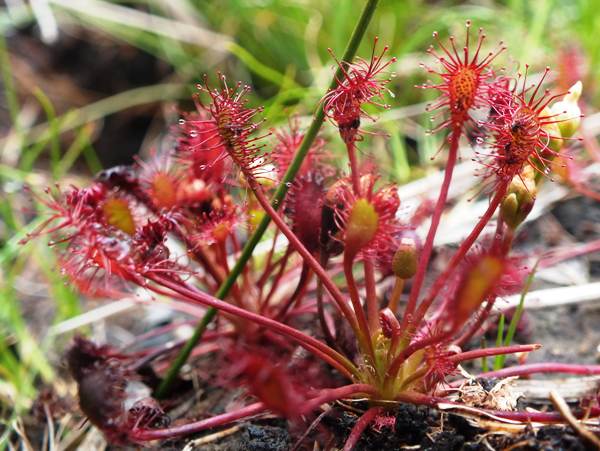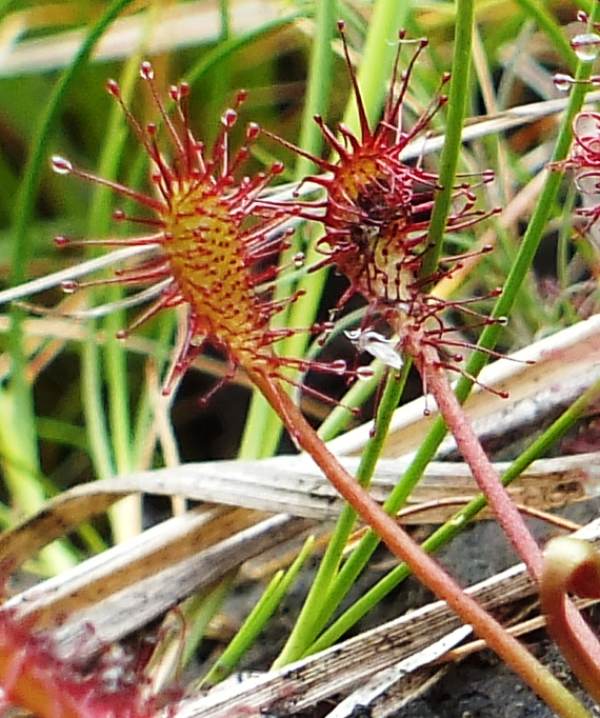Drosera intermedia - Oblong-leaved Sundew
Phylum: Magnoliophyta - Class: Equisetopsida - Order: Caryophyllales - Family: Droseraceae

Description
Also referred to as Spatulate-leaved Sundew and as Spoonleaf Sundew, this insectivorous plant has eight or more leaves radiating outwards from the centre with their hairy spoon-like paddles angled upwards. There is a thick coating of red hairs around the edges and on the upper surfaces of its strikingly red leaves, which are typically 5cm long including the stalk. The hairs are tipped in translucent sticky droplets upon which the plant captures small insects. The common name Sundew originates from these droplets that in the past were thought to be dew rather than a substance produced by the plant itself. Once trapped and stuck fast the insect is enfolded in the leaf and, over a period of a few days, a further secretion from the centre of the leaves reduces the insect to a form that can be absorbed by the plant as supplementary food. In this way sundews can live on substrates that provide very little in the way of nutrients and essential minerals.
The hairy paddles are spoon-shaped and taper down into relatively long stalks that are more or less hairless. (In contrast the leaf stalks of the more common Round-leaved Sundew Drosera rotundifolia are covered in fine down.)
Flower buds are visible in the specimen shown above, but the white flowers themselves open only for a brief time during periods of bright sunlight. (The more commonly encountered Round-leaved Sundew Drosera rotundifolia and the rare Great Sundew Drosera anglica have very similar flowers.)

Oblong-leaved Sundew has very small white flowers, each with five to eight petals, borne in a simple cyme on a stem 4 to 10cm tall.
Habitat
Oblong-leaved Sundew rarely grows on sphagnum moss; it favours the kind of acid soils that are found in heaths and in particular exposed patches of permanently-damp peat in acidic bogs. (The physically similar but much larger Great Sundew Drosera anglica grows on sphagnum moss.)
Distribution
This plant is moderately common in acidic parts of England, Wales and Ireland, particularly in the west, and it is even more widespread in western Scotland. Oblong-leaved Sundew also occurs Ireland and in many northern European countries as well as in some parts of North America.
Blooming Times
Drosera intermedia produces flowers from June to August.
The specimens shown here were photographed at Cors Fochno (Borth Bog) in Wales in late July.
Sue Parker's latest ebook is a revised and enlarged second edition of the acclaimed Wildflowers in the Algarve - an introductory guide. Full details here...
Buy it for just £3.95 on Amazon...
Please Help Us: If you have found this information interesting and useful, please consider helping to keep First Nature online by making a small donation towards the web hosting and internet costs.
Any donations over and above the essential running costs will help support the conservation work of Plantlife, the Rivers Trust and charitable botanic gardens - as do author royalties and publisher proceeds from books by Pat and Sue.



